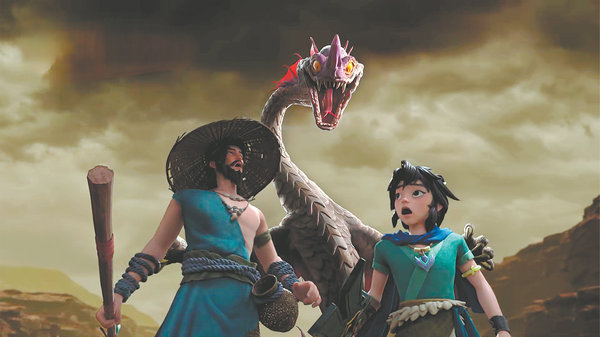

Cao says that this conjecture arises from the book's intricate depictions of different customs and landscapes across the Nine States (an administrative concept in ancient China), which are believed to mirror the territories Dayu traversed during his heroic endeavor to control the floods.
The project's team of around 200 creators and animators has taken over two years to polish the tale and design the characters, with the aid of established scholars like Chen Lianshan, a professor of folklore at Peking University, and Xiao Jun, director of the Ancient Astronomy Research Center at the Beijing Planetarium.
Interestingly, the animated series, which features a lot of creatures whose names include rarely-used Chinese characters, is deemed by some parents as good educational material for their children.
"We are delighted that the cartoon has sparked the curiosity of many students, and is aiding them in memorizing these characters better through their vibrant visual representations," says Cao.
The creatures in the series are both formidable and adorable. For example, Taowu, who is one of the four most fearsome beasts in ancient folklore, is depicted with the intimidating appearance of a white-haired tiger with fiery red and dark stripes. Ershu, a timid creature Dayu encounters in a lush forest, looks like a squirrel but can use its oversized ears as makeshift wings to soar through the air.
Explaining that the team did a great deal of research, Cao says that the main creators also traveled to Henan province. They visited Yinxu Ruins, where the last capital of the Shang Dynasty (c. 16th century-11th century BC) was located, and Erlitou Site, generally considered to be the ancient Xia capital. Museums on the sites house artifacts estimated to be thousands of years old, and so are closest to the era in which Dayu is said to have lived.